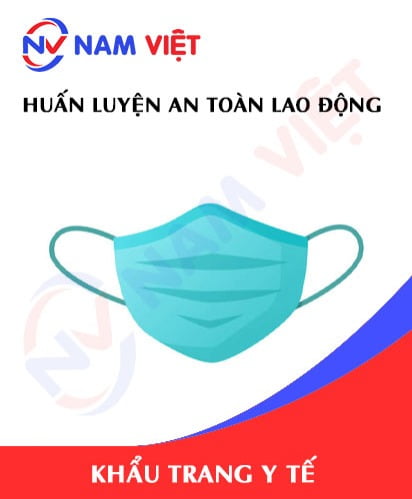Occupational Safety Training for Organ Manufacturing
99,000 ₫
Note: The above price is calculated per person and may vary depending on the number of participants in the course and market fluctuations. For more accurate pricing support, please refer to the price list or contact our consulting staff directly.
Occupational safety is an important issue in organ manufacturing factories and needs to be addressed promptly to ensure the health and safety of workers and enhance the reputation of businesses. The Occupational Safety Training course is one of the effective solutions to raise awareness of how to prevent workplace accidents for workers involved in organ production.
Table of Contents
Toggle1. Overview of the Organ Keyboard
a. What is an Organ Keyboard?
The organ keyboard, also known as a keyboard, is a type of electronic musical instrument popular in modern music genres. Developed from classical keyboard instruments such as the piano and pipe organ, the electronic organ can reproduce sounds of various instruments through sound chips and built-in speaker systems.
A special feature of the organ keyboard is its ability to adjust tones, rhythms, and sound effects flexibly, allowing players to create rich and diverse music pieces. Many modern organ keyboards are equipped with advanced features such as MIDI connectivity, USB ports, and software that supports learning and music composition.
The organ keyboard is not only popular in bands and orchestras but also serves as a useful educational tool in music schools and training centers. Thanks to its compact design and ease of use, the organ keyboard is an ideal choice for both beginners and professional musicians.

b. Machinery Used in Organ Keyboard Production
- CNC Machine (Computer Numerical Control): CNC machines are used to cut and process metal and plastic parts with high precision. Components such as the frame, keyboard, and other mechanical parts are processed using CNC machines to ensure quality and accuracy.
- Injection Molding Machine: Used to manufacture plastic parts such as keys and outer shells. The injection molding process allows mass production of complex-shaped and durable plastic parts.
- PCB Printer (Printed Circuit Board Printer): Electronic organs require printed circuit boards (PCBs) to connect and control electronic components. PCB printers create PCBs with small and precise electrical pathways, ensuring the instrument’s performance.
- Pick and Place Machine: Automatic component placement machines are used to assemble small electronic components like chips, resistors, and capacitors onto PCBs. This process requires high precision and is performed by robotic arms.
- Quality Testing Machine: After assembly, organs undergo quality checks to ensure proper functionality. Quality testing machines may include sound measuring devices, key sensitivity tests, and electronic connection inspections.
- Automatic Soldering Machine: To ensure stable and reliable electronic connections, automatic soldering machines solder electronic components onto PCBs. This automated process speeds up production and ensures soldering accuracy.

c. Famous Organ Keyboard Brands
- Yamaha: One of the most famous musical instrument brands, Yamaha offers a wide range of organ keyboards from beginner models to professional instruments. Yamaha organs are known for high-quality sound, durability, and advanced features.
- Casio: Casio is known for affordable products suitable for all player levels. Casio organs often include many learning features to help beginners easily access and learn to play.
- Korg: Korg is renowned for professional products, especially in electronic music production. Korg organs are chosen by musicians and producers for their rich sound and strong customization capabilities.
- Roland: Roland is a major name in electronic musical instruments, famous for high-quality and innovative products. Roland organs usually come with advanced sound technologies and modern designs, suitable for many music genres.
- Kurzweil: Kurzweil is known for products aimed at professional musicians. Kurzweil organs typically feature realistic sounds close to acoustic pianos, along with many features that support composition and performance.
- Nord: Nord, from Sweden, stands out with simple yet powerful designs. Nord organs are known for high-quality sounds, especially classic organ tones and electric piano sounds.

d. Specific Jobs in an Organ Keyboard Manufacturing Plant
Group 1
- Executive director, deputy executive director, department heads in the organ keyboard manufacturing plant.
Group 2
- Safety officers: manage safety in the factory, design safety procedures, supervise and enforce employee compliance with safe working processes.
Group 3
- CNC machine operators: operate CNC machines to process metal and plastic parts according to design.
- Injection molding workers: operate injection molding machines to produce plastic parts such as keys and outer shells.
- Assembly workers: assemble mechanical and electronic parts, ensuring accurate and secure connections.
- Soldering technicians: use automatic soldering machines to solder electronic components onto printed circuit boards (PCBs).
- Quality control technicians: inspect products after assembly to ensure proper function and defect-free output.
- Sound quality specialists: assess the sound quality of each organ keyboard to ensure clear and accurate audio output.
- Packing workers: pack finished products into boxes and protect them from damage during transportation.
Group 4
- Office, service, sales, and marketing roles.
- Production management, quality management, human resource management, material management, financial accounting management.
- Research and development of new products, packaging design.
2. Overview of Labor Safety Training for Organ Keyboard Production
In this article, we focus on issues related to Group 3 because Group 3 directly participates in production and faces the highest labor safety risks. For more information on other groups, see here.
a. What is Group 3 Labor Safety Training?
- Group 3 labor safety training consists of sessions that provide workers with awareness on preventing workplace accidents.
- The safety training course helps workers recognize and avoid hazards, reducing risks of occupational accidents during work.
REGISTER FOR LABOR SAFETY TRAINING SERVICE
b. Training Duration
Initial safety training duration
- Total training time is at least 24 hours, including examination time.
- 8 hours of theory on safety and labor hygiene policies and legal system
- 8 hours of theory on basic safety and labor hygiene knowledge
- 4 hours of theory on specialized training content
- 2 hours of practical training on specialized content
- 2 hours of theoretical examination at the end of the course
The safety training center will arrange the sessions according to workers’ schedules, usually over 6 sessions spanning 3 days, provided the company can arrange continuous study time.
Periodic safety training duration
- Before the labor safety card expires, workers wishing to renew it must complete periodic labor safety training lasting at least 50% of the initial safety training duration.
Explanation: The total periodic labor safety training time is at least 12 hours, including examination time. After completing the periodic course and passing the test, workers will be reissued or extended their labor safety card.
c. Training Course Content
| No. | TRAINING CONTENT | TRAINING TIME (HOURS) | |||
| Total | Including | ||||
| Theory | Practice | Exam | |||
| I | System of policies and laws on labor safety and hygiene | 8 | 8 | 0 | 0 |
| 1 | Overview of the legal documents system on labor safety and hygiene. | 6 | 6 | ||
| 2 | Standards and technical regulations on labor safety and hygiene. | 1 | 1 | ||
| 3 | Specific regulations by state management agencies on labor safety and hygiene when building, expanding, or renovating works, facilities for production, usage, storage, and inspection of machines, equipment, materials, and hazardous substances. | 1 | 1 | ||
| II | Basic knowledge of labor safety and hygiene | 8 | 8 | 0 | 0 |
| 1 | Basic knowledge about hazardous and harmful factors in the workplace. | 4 | 4 | ||
| 2 | Methods to improve working conditions. | 1 | 1 | ||
| 3 | Safety culture in production and business. | 1 | 1 | ||
| 4 | Rights and obligations of employers and employees; policies and regimes on labor safety and hygiene for workers; functions and tasks of safety and hygiene network and officers. | 1 | 1 | ||
| 5 | Labor safety and hygiene regulations, safety signs and instructions, use of safety equipment and personal protective equipment; accident first aid skills, occupational disease prevention. | 1 | 1 | ||
| III | Specialized training content | 6 | 4 | 2 | 0 |
| Comprehensive knowledge about machines, equipment, substances generating hazardous and harmful factors; risk analysis, evaluation, and management of labor safety and hygiene; safe working procedures with machines, equipment, and substances requiring strict labor safety and hygiene. | 6 | 4 | 2 | ||
| IV | Final safety training exam | 2 | 2 | 0 | 0 |
| Total | 24 | 22 | 2 | ||
See more training contents for 6 groups
d. Labor Safety Card
After completing the labor safety training and passing the exam, workers will be issued a labor safety card (commonly called the Group 3 labor safety certificate).
The Group 3 labor safety card clearly shows information such as full name, date of birth, specific job and working environment. It also includes training time, a red stamp, and a signature confirming course completion.
According to regulations on card issuance specified in Clause 2 of Article 24, Decree 44/2016/ND-CP, there are two cases:
- If the employer and employee have a labor contract, the employer must sign, stamp, and countersign the labor safety card for the worker after the worker completes the training course and passes the exam.
- If the worker is freelance, seasonal, and does not have a labor contract, the training unit must sign, stamp, and countersign the labor safety card after the worker completes the training course and passes the exam.

3. Identifying Hazards Affecting Workers in Organ Manufacturing
- Machinery Hazards:
- CNC machines and injection molding machines: These machines can cause serious injuries if workers do not follow safety rules, such as getting their hands caught or being hit by flying debris.
- Automatic welding machines: Exposure to high temperatures and sparks during welding can cause burns or explosions if appropriate personal protective equipment (PPE) is not used.
- Chemical and Material Hazards:
- Chemicals used in plastic manufacturing: Contact with these chemicals can cause skin irritation, respiratory issues, or other health problems. Improper handling and storage may also lead to fire or explosions.
- Dust and debris from material processing: Cutting, grinding, or machining parts may release dust and debris that harm the respiratory system or cause eye injuries.
- Electrical and Electronic Hazards:
- Electric shock: Working with electronic devices and printed circuit boards carries a risk of electric shock, especially if electrical safety procedures are not followed.
- Electromagnetic waves: Prolonged exposure to electromagnetic waves from electronic devices may affect health if proper protective measures are not in place.
- Work Environment Hazards:
- Noise: The manufacturing environment can be very noisy, causing hearing problems if ear protection is not worn.
- Poor lighting: Insufficient lighting can cause eye strain and accidents due to poor visibility.
- Hazards from Repetitive Work:
- Muscle and joint strain: Repetitive tasks, especially those requiring prolonged standing or sitting, can cause muscle strain and musculoskeletal problems.

4. Safety Measures for Participation in Organ Manufacturing
To minimize these hazards, strict occupational safety measures should be applied:
- Occupational safety training: Provide training for all employees on how to identify and handle hazards.
- Use of personal protective equipment (PPE): Ensure all workers use appropriate PPE such as gloves, safety glasses, dust masks, and ear protection.
- Regular machinery maintenance and inspection: Ensure machines and equipment are always in good working condition and safe.
- Chemical safety management: Store and handle chemicals according to safety regulations, using proper protective measures when working with chemicals.
- Improving working conditions: Ensure a clean work environment with adequate lighting and good ventilation.
- Regularly conduct occupational environment monitoring in factories to collect and analyze harmful factors affecting workers, thereby adjusting and reducing hazards to prevent occupational diseases.
Identifying and managing hazards is a crucial step to ensure a safe working environment and protect the health of workers in organ manufacturing plants.
5. Benefits of Occupational Safety Training for Organ Manufacturing
An Toàn Nam Việt offers your business the following great benefits upon completing occupational safety training courses in compliance with Decree 44/2016/ND-CP on Occupational Safety and Hygiene for companies, factories, and enterprises.
- Workers can recognize potential occupational accident risks and take preventive measures to avoid accidents.
- Your business can establish risk prevention measures in production, operation, and maintenance processes.
- Reduce costs associated with occupational safety risks.
- Uninterrupted production processes help increase labor productivity and product quality.
- Ensure compliance with occupational safety laws to avoid legal risks.
- Create prestige and professionalism in all aspects, thereby enhancing your business’s brand.
Nam Việt’s training courses are the solution to prevent and combat external factors impacting individuals, helping them avoid dangers that may lead to injury or, more seriously, death.
REGISTER FOR OCCUPATIONAL SAFETY TRAINING SERVICE
6. Customer Feedback After Completing Organ Manufacturing Safety Training
An Toàn Nam Việt has many years of experience accompanying numerous businesses in Vietnam in general and southern provinces in particular. This responsibility is very precious to Nam Việt, which is why its Occupational Safety Training service is becoming increasingly professional. The motivation for Nam Việt’s growth comes from positive feedback and suggestions from businesses. Below are some testimonials from partners we have served.
Bac Nam E&C Investment and Construction Joint Stock Company
“The first time using An Toàn Nam Việt’s service, I was surprised by the enthusiastic 24/7 support from the consulting team. The class organization was quick and convenient for our company. Thank you very much, Nam Việt!”
Hoa Dat Construction and Trading Joint Stock Company
“Nam Việt’s service helped us a lot in simplifying occupational safety and completing safety documentation for the working process. The consulting team was enthusiastic and timely in responding to our questions. 5 stars for Nam Việt.”
See more customer interviews after using An Toàn Nam Việt’s services
7. An Toàn Nam Việt’s Labor Safety Training Competence
An Toàn Nam Việt is a reputable and quality labor safety training center in Vietnam today. Our safety training sessions are continuously conducted at production workshops, factories, or construction sites across the country (all 63 provinces in Vietnam).
REGISTER FOR LABOR SAFETY TRAINING SERVICE
Labor Safety Training License
- An Toàn Nam Việt has been inspected and certified by the Safety Department of the Ministry of Labor – Invalids and Social Affairs for meeting the conditions to operate occupational safety and hygiene training activities. This further strengthens our capacity in labor safety training.

Training Materials and Lectures
- Before labor safety training materials are introduced in labor safety training courses, they are reviewed and approved to ensure the lectures are always accurate in knowledge and effective in application.
- The teaching methods of our instructors are standardized according to An Toàn Nam Việt‘s teaching standards, developed by experts in occupational safety and hygiene training to maximize knowledge absorption for trainees.
Facilities
- Controlling environmental factors in the classroom that affect the training process enhances teaching efficiency and learners’ knowledge absorption.
- Our training facilities always provide spacious classrooms that meet standards on area, lighting, training equipment, etc.
8. Nationwide Reputable and Quality Safety Training Center
At An Toàn Nam Việt, we always prioritize the professional dedication to labor safety training. For us, imparting knowledge on self-protection to workers to equip them with safety tools on their livelihood journey is contributing to nation-building.
To ensure effective training, we carefully and meticulously prepare every detail, no matter how small—from tools, teaching devices, curricula, materials, sound, to lighting.
Our labor safety instructors are experts with many years of experience in the field. Some even have research works on hazard identification across industries and ways to prevent them.
Our lectures are distilled from practice and delivered in an engaging, easy-to-understand manner for workers. These factors help learners stay comfortable during training and absorb knowledge effectively. Naturally, the knowledge shared always aligns with Decree 44/2016/ND-CP.
As a result, trainees understand many hazard prevention measures and how to protect themselves. They can also apply this knowledge appropriately in their actual work.
Our Safety Training Center proudly provides reputable and professional labor safety training services with the following advantages:
- Competitive training costs while ensuring quality.
- Flexible training schedules adapted to companies’ production situations.
- Quick and lawful procedures for issuing labor safety training certificates.
- Experienced instructors with many years in the profession.
- Classrooms controlled for factors affecting training, improving teaching efficiency and learner absorption.
- Lessons tailored to occupational safety work in enterprises.
- An Toàn Nam Việt works dedicatedly and professionally to support customers accurately and promptly.

9. Additional Reference Materials for Labor Safety Training in Organ Production
- Labor Safety Training Materials Set
- Labor Safety Training Test Sets
- Labor Safety Materials for Organ Production
- Labor Safety Training Curriculum for Organ Production
- Multiple Choice Test on Labor Safety in Organ Production
No comments yet















Review Occupational Safety Training for Organ Manufacturing
There are no reviews yet.